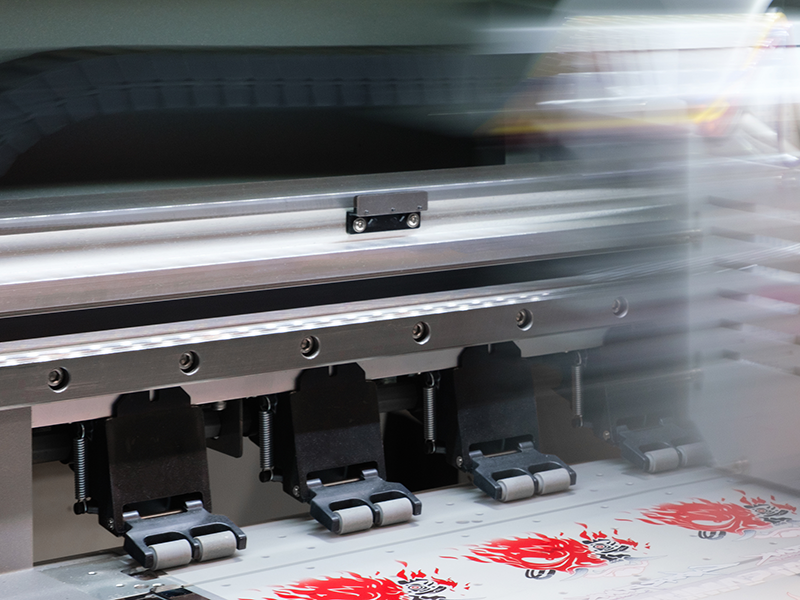
Jon Harper Smith has extensive experience within the printing industry with particular focus on industrial inkjet processes. As Jon's latest report
The Future of Digital Textile Printing to 2028 nears publication, we chatted with him about the opportunities in the digital textile printing industry and outlook for the next five years.
What has changed in the digital textile printing market in recent years?
The textile industry has been greatly affected by world events, particularly the Covid-19 pandemic and the war in Ukraine, which have had several direct effects on most of the textile segments. Production in the apparel and household segments fell partly due to depressed demand as many people stayed at home and partly because of changes in stocking policy by key brands, where large amounts of product were held in inventory instead of being destroyed or recycled. Display textiles were influenced by the same dynamics that affected wide format graphics, with sharply reduced demand due to the lack of events and less spending by retailers on in-store advertising.
The market is recovering, albeit more slowly than would be the case without the inflation and cautious consumer spending caused by the war in Ukraine; however, the changes to brand behaviour are still very much evident. The old sales cycle of full price sell-through followed by markdown and then returns is less evident. This is due in part to changes in government regulation, which are making it increasingly difficult to dispose of unwanted textiles. The old practice of burning or disposal in landfill is no longer acceptable in many regions, and textiles are increasingly being recycled, albeit often into insulation or similar low value items.
How is the digital textile printing market adapting to changes within the print industry?
Some parts of the digital textile market are less affected by these changes. Digital textile printing can, depending on the exact product being manufactured, take place closer to the retailer, which offers benefits in terms of speed to market and reduction of lengthy supply chains. This can, in turn, make it easier for brands to purchase as needed rather than buying large stocks from deep sea suppliers - this can help to manage inventories and reduce waste. Some segments, apparel in particular, require hand sewing, which is a manual process irrespective of the printing process, although there are some automated sewing systems that can produce an increasing number of textile products; for example, in the household segment.
What is the major threat to the digital textile printing industry?
Increasing government regulation makes it attractive to re-shore textile production; however, there is a lack of skilled workers for textile cut-and-sew and manufacturers are finding it increasingly difficult to recruit or retain staff. These government regulations combined with industry initiatives cover a range of activities including ESG compliance for manufacturers and retailers. For example, in the US, the FABRIC (Fashioning Accountability and Building Real Institutional Change) act has been proposed to protect workers’ rights and increase incentives for domestic (US) apparel production. Training and recruitment drives combined with wage increases are being used to address the problem of skilled worker shortage.
What opportunities can the digital textile printing market witness over the next five years?
Digital textile printing can be part of the solution to many of the problems affecting the global textile market. The ability to print locally to the cut-and-sew facility can help to re-shore production, reduce supply chain length and avoid excess production of unwanted volume. In addition, depending on the exact ink technology, printing can take place without steaming and washing that are needed to fix some of the dye technologies. Dye sublimation and pigment inks are key to this, and the development of pigment ink development in particular has been a key focus area in recent years.

 Jon Harper Smith has extensive experience within the printing industry with particular focus on industrial inkjet processes. As Jon's latest report The Future of Digital Textile Printing to 2028 nears publication, we chatted with him about the opportunities in the digital textile printing industry and outlook for the next five years.
Jon Harper Smith has extensive experience within the printing industry with particular focus on industrial inkjet processes. As Jon's latest report The Future of Digital Textile Printing to 2028 nears publication, we chatted with him about the opportunities in the digital textile printing industry and outlook for the next five years.